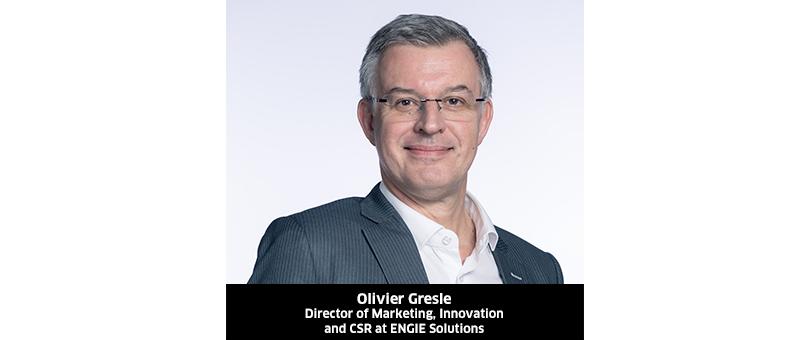
In your opinion, what is the key to businesses and local authorities reducing their energy consumption: energy efficiency or energy sufficiency?
Olivier Gresle: Although they are indeed different, these ideas are not contradictory; they are complementary. Sufficiency involves reducing the intensity of consumption, it is a voluntary act. When I choose sufficiency, I agree to have an impact on my way of life, for example by lowering the temperature. Whereas energy efficiency is an invitation to minimise primary energy consumption for a given intensity. How is this achieved? By optimising efficiency, reducing losses… In short, by using as little incoming energy as possible for the same result. At ENGIE Solutions, we offer our customers a “sufficiency - efficiency - greening” triptych. For both companies and local authorities, this involves consuming less and better to reduce energy expenditure, of course, but also to preserve our resources and our planet.
Does the role of an energy provider involve offering sufficiency support to customers?
O. G.: I would go even further: at ENGIE, it is our purpose! In fact, we have made it our mission to help our customers achieve their energy transition and their net zero carbon goals. We are our customers’ allies. This is not just a sales pitch; it is the whole point of our mission. The purpose of all our technologies, expertise, and know-how is addressing the issues of our professional customers. And sufficiency is one of the key levers of our approach.
“Our purpose is to support our clients achieve the transition to net zero carbon with a lever that is now more important than ever: sufficiency.”
Flexibility is key to maintaining balance on the grid. Are you developing this with your professional customers?
O. G.: Yes, of course. It has become even more obvious since the onset of the crisis; managing the grid involves balance. Currently, being able to stop facilities on the electricity market means that we can sell paid capacities and availability to the grid, since this action eases pressure on the network.
We are also able to launch production facilities when required by the grid, especially at peak times. We are therefore becoming a kind of decentralised electricity producer. Consequently, flexibility can mean shedding or producing on request. Flexibility therefore has two faces.
What does this look like, in practice?
O. G.: We are able to stop our machines at peak consumption periods as part of a sufficiency initiative. Although it is bound to increase, it will still need to be developed, since the market is not structured, and technologies such as storage must still become more competitive. Generally, it is in our best interest to develop anything that can help balance the network, for example, run cogeneration plants, defer the start-up of installations, or develop individual self-consumption using solar energy. In fact, ENGIE signed two charters aimed at driving and supporting efforts geared toward sufficiency and supply security: EcoWatt and EcoGaz.
Renewable energies, energy sufficiency, energy efficiency, how can companies rapidly fund this transition in the current backdrop of high energy prices?
O. G.: Key points ENGIE Solutions is prepared to fund these projects, including committing to results. By funding facilities over long periods, we offer our customers the guarantee of quick savings, and the possibility of decarbonizing their consumption, without investing their own capital. The technologies that we offer and use include a high level of renewable and most often, local energy (geothermal energy, wood, biogas, etc.). They help rethink the energy mix of our customers on the scale of a given building, neighbourhood, or region, and needs can even be pooled through heating or cooling networks. An important awareness is emerging, alongside a growing number of projects.
In practice, with respect to energy sufficiency, what does this support mean?
O.G.: I would mention two important aspects: the involvement of all our stakeholders and raising awareness. Internally, we are training our sales teams and employees on sufficiency and to changes in our offers. We have set up and rolled out action plans related to joining EcoWatt and EcoGaz. For example, weather forecasts for electricity and gas networks are available on Predity, our real-time management platforms of energy infrastructures for which we are responsible on behalf of our customers. We are setting up internal and external communication actions, such as webinars with partners. Finally, we have developed new tools for our customers, such as the portal dedicated to “Decreasing consumption,” which allows creates simulations on potential savings and shows their position vis-à-vis their best practices status, encouraging them to take action.
To conclude, I would say that sufficiency is becoming an essential and complementary lever for our energy efficiency and greening initiatives to tackling the urgent energy crisis both now and in the longer term.
